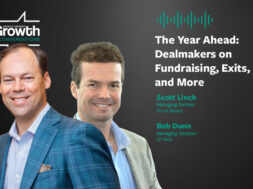Building Better Businesses Through a Scalable Add-on Capability
Platte River details its framework for add-on success

The prevalence of add-on acquisitions has jumped in recent years, as private equity firms look to increase the value of existing platform companies. According to GF Data, an ACG company, add-ons made up about 40% of buyouts that it tracked through the first half of this year, up from a historical average of around 30%.
Successfully executing an add-on strategy, however, requires a thoughtful and intentional approach—one that our team at Platte River Equity has fine-tuned over time.
Here is how we have approached add-on acquisitions, and lessons we’ve learned along the way.
Supporting Our Operators
At Platte River, we invest in lower middle-market industrial businesses, typically as the first institutional capital partner to these companies. Our portfolio companies are led by exceptional operators who know their industries deeply but have had limited experience identifying, evaluating, and integrating acquisitions. Over time, we have built the internal capabilities to bridge that gap, turning add-on acquisitions into one of the core value-creation levers in our investment playbook.
Platte River’s Business Development (BD) team is integrated with our investment professionals, portfolio operations team, and portfolio company management teams to design and execute add-on strategies. We combine management teams’ knowledge of their peers with our own long history of understanding what makes for a successful M&A combination.
Our BD team participates in management meetings, board discussions, and strategic planning sessions. This deep engagement not only helps us to better understand each company’s unique priorities and culture but also enables us to effectively share those stories and our criteria with the marketplace. Knowing precisely what makes an attractive partner or acquisition target strengthens our sourcing efforts and our ability to align external opportunities with internal strategy.
Developing a Repeatable Framework
Because we are pursuing multiple add-on acquisitions across our portfolio at any given time, scalability and portability are critical. We’ve developed a repeatable framework that guides our process from the outset.
- Early Pipeline Development: At the onset of kicking off due diligence for a new platform investment, Platte River’s BD team works alongside management to build a robust pipeline of potential add-on opportunities, often expanding upon and enhancing the effort management has already begun, though they lack the tools, databases, and industry contacts we can bring to bear. Because this effort starts alongside all other internal and third-party due diligence, it gets the same mind share and effort as traditional works streams such as financial or legal due diligence.
- Structured Outreach: Together with portfolio company management, we establish a systematic outreach process to ensure no opportunity is missed and follow up is consistent. Tactically, each outreach is handled in a bespoke manner. For example, where the market is niche and each of the participants is known to one another, it often makes sense for management to arrange in-person meetings with our support. In cases where the industry is highly fragmented, we will use third parties to augment a robust calling and email campaign, utilizing materials and talk tracks developed by us to optimize yield. Most often, the effort is a combination of several methodologies. Overall, we have found that investing in a certain industry for a long period of time leads to relationships that open doors otherwise not available to generalist firms trying to enter a new space.
- Leveraging Our Network: We draw on a deep network of relationships, including industry executives, investment banks, and other intermediaries to maximize the efficacy of each search.
- “All of the Above” Approach: Everyone at Platte River is responsible for cultivating relationships, and we combine direct outreach with third-party buy-side firms, finder’s fee arrangements, and 20 years of intermediary relationships.
- Internalizing the M&A Function: As our portfolio companies have scaled, we have leaned into standing up internal M&A resources and personnel. In several instances, these personnel have been Platte River employees taking on “in-house” roles at portfolio companies. Across all scenarios, we find that over enough repetitions, portfolio companies develop a better M&A muscle internally. Much of this comes from working alongside the Platte River investment team as it navigates the pursuit and closing of add-on acquisitions. Over time, the pursuit and diligence of new opportunities become fairly standardized across acquisitions. The real trick is ensuring our portfolio company is organized internally to do the much harder job of integration.
Integrating Effectively
We are cognizant of the reputation private equity can have around roll-up strategies that are not integrated into one cohesive and strategic business. Executing an acquisition is only half the equation; the heavy lifting begins again once a transaction is closed.
Platte River’s Portfolio Operations team partners closely with management to ensure smooth integration, guided by our proprietary value creation framework (FLOWS). This framework standardizes 100-day plans, value creation strategies, and integration best practices across the portfolio, helping us maintain consistency.
The “F” in FLOWS stands for Financial Systems & Business Intelligence, so the best example of the framework in action is making sure not only are all add-ons are on one ERP system, but the standardization of KPIs and metrics across the company are the same. It is not unusual for add-ons to be smaller or less sophisticated businesses in this department, and creating uniformity allows the second leg of the FLOW framework, the “L” for Leadership Optimization, to organize incentive systems on uniform metrics.
This repeatable and scalable approach to add-ons is delivering results: Since January 2024, Platte River portfolio companies have completed 20 add-on acquisitions, over 75% of which were sourced through proprietary channels.
Scale alone is not a strategy for building great businesses. Success comes from thoughtful and intentional execution from identification through to integration. Our approach ensures we are not only growing larger enterprises but also stronger, more resilient ones.
Lauren A. Metz is the Director of Business Development at Platte River Equity, joining the firm in 2018. She leads the firm’s deal sourcing, business development and intermedia
Middle Market Growth is produced by the Association for Corporate Growth. To learn more about the organization and how to become a member, visit acg.org.


